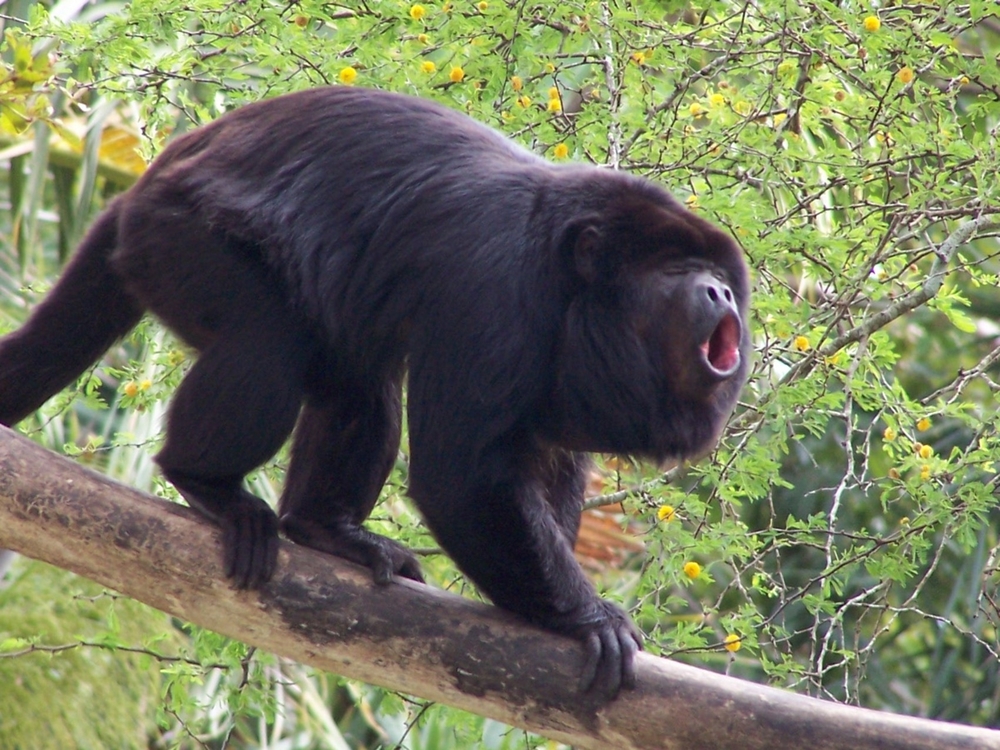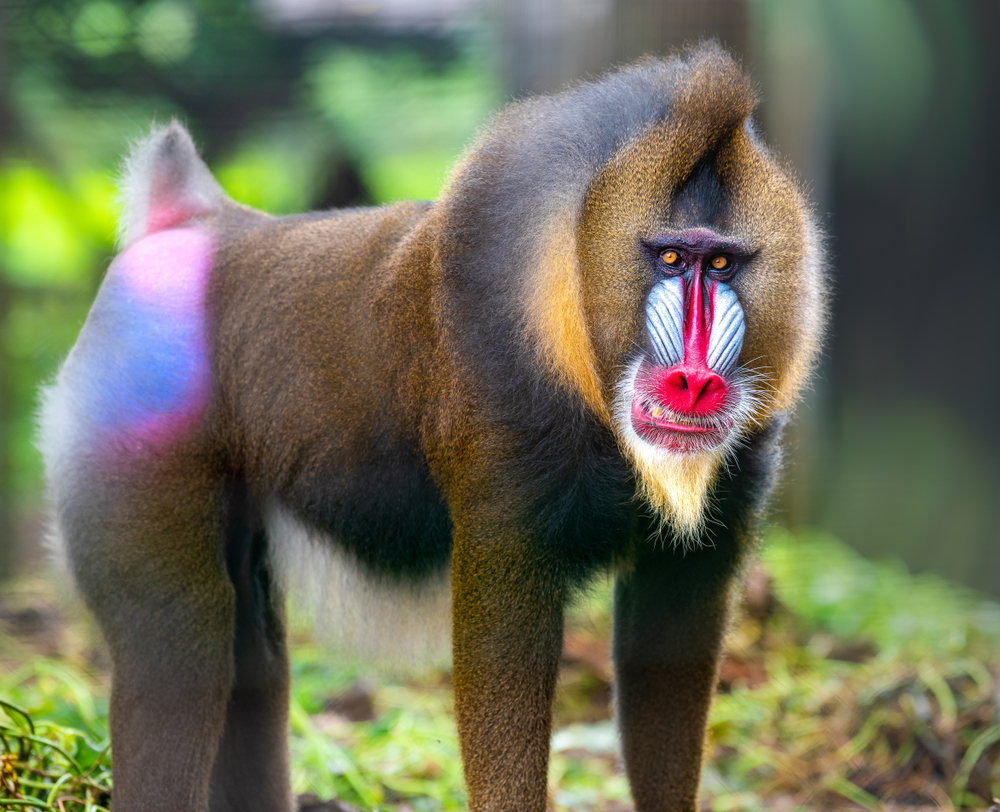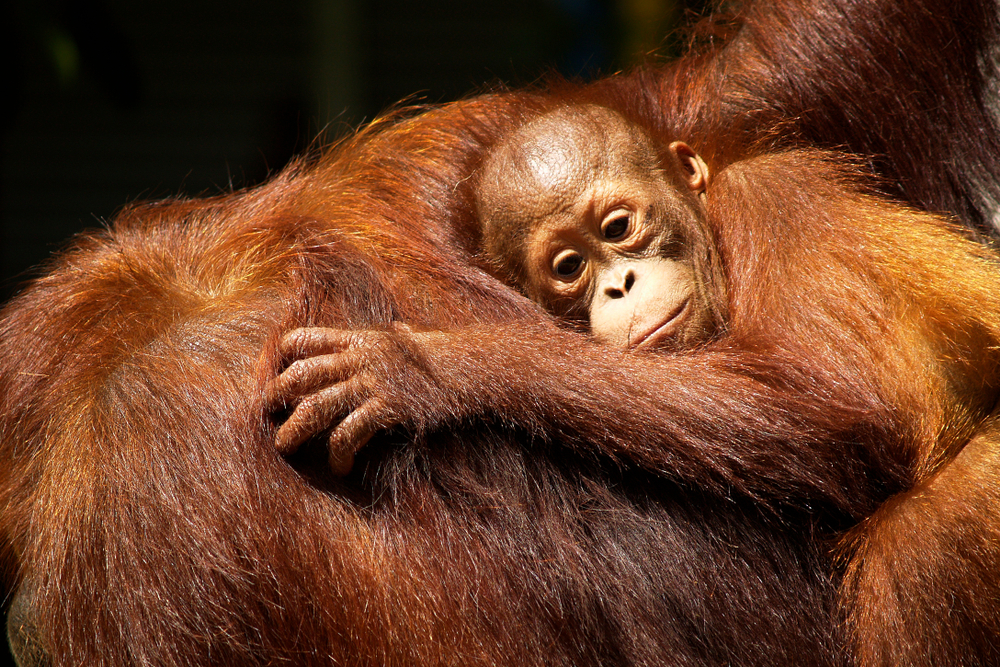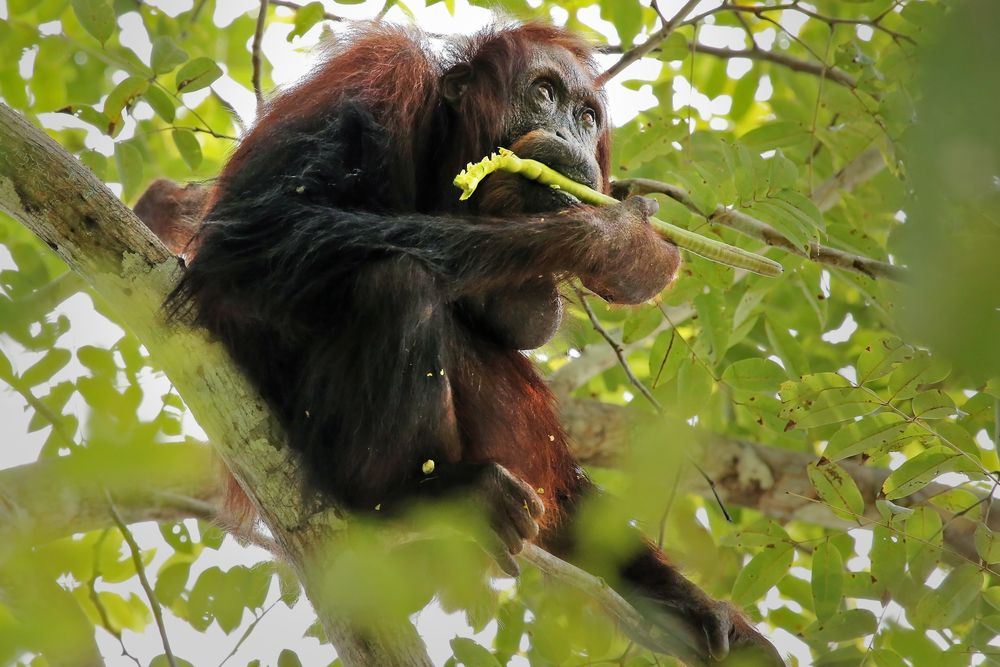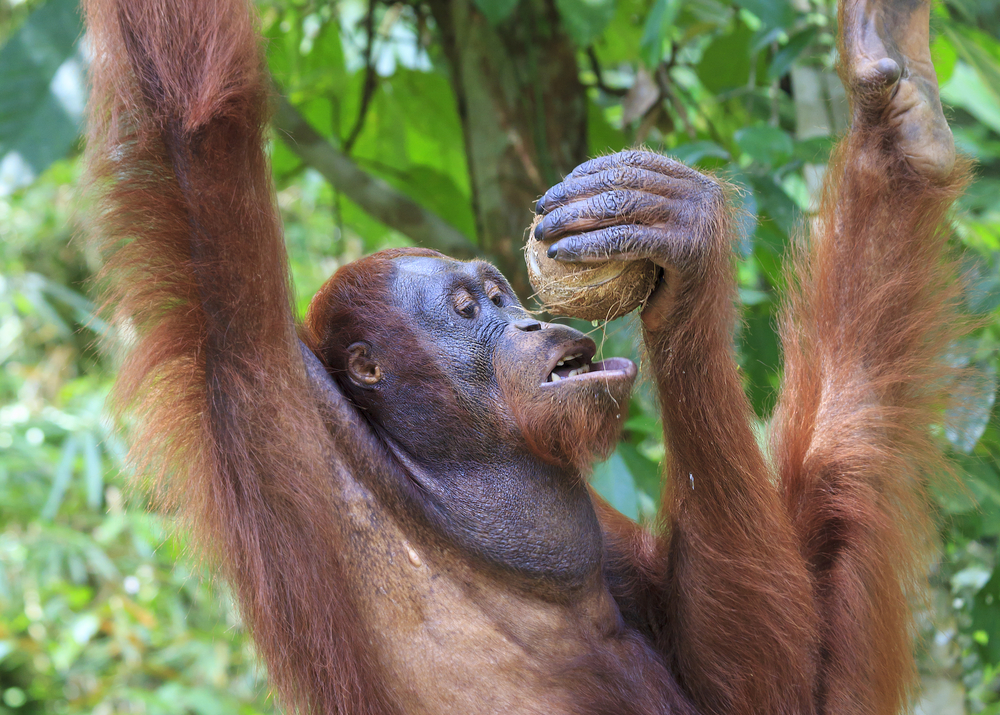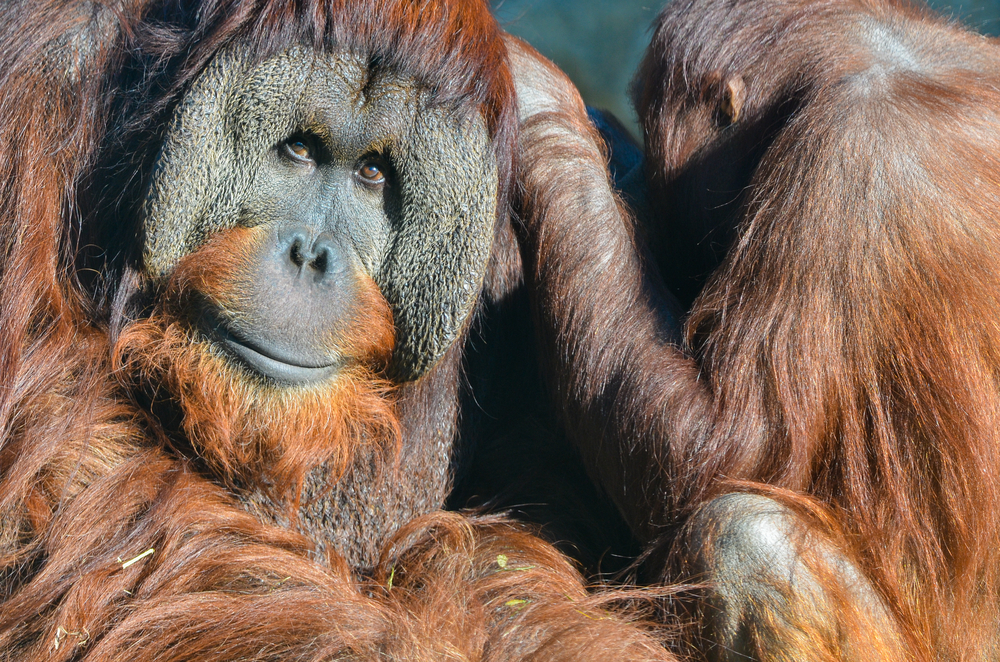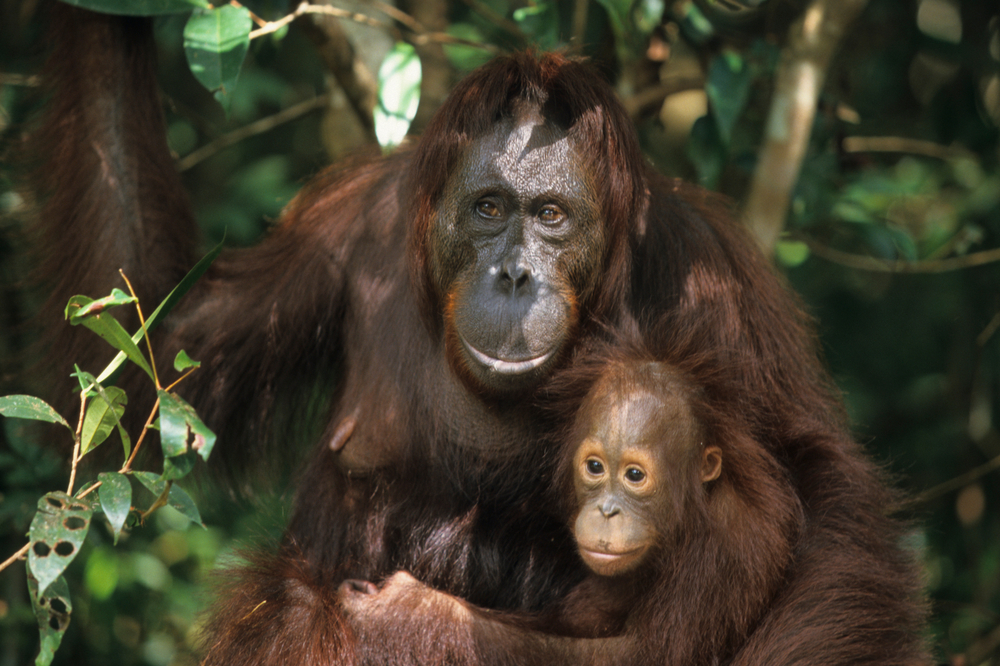About
#Mammals
#Primate
The Orangutan, scientifically known as Pongo, belongs to the Animal Kingdom’s phylum Chordata and class Mammalia. They are part of the Hominidae family, making them closely related to other great apes such as chimpanzees, gorillas, and humans. Orangutans are divided into three species: the Sumatran orangutan (Pongo abelii), the Bornean orangutan (Pongo pygmaeus), and the recently identified Tapanuli orangutan (Pongo tapanuliensis), all endemic to Southeast Asia.
Orangutans are renowned for their distinctive appearance, including shaggy reddish-brown fur, long arms, and a stocky build. They have a pronounced face with large cheek pads in males and a characteristic “flanged” throat pouch. Known for their high level of intelligence, orangutans are among the most intelligent primates, displaying tool use, problem-solving skills, and complex social behaviors.
These arboreal creatures are primarily frugivorous, consuming a diet consisting mainly of fruits, supplemented with leaves, bark, insects, and occasionally small vertebrates. Orangutans are solitary animals, with adult males typically leading solitary lives and females caring for offspring independently.
Conservation Concerns
Orangutans face significant threats to their survival, primarily due to habitat loss, illegal hunting, and the pet trade. Deforestation, driven by agricultural expansion, logging, and palm oil plantations, has resulted in severe habitat fragmentation, isolating orangutan populations and reducing their available range.
Both the Sumatran and Bornean orangutans are classified as Critically Endangered on the IUCN Red List, with the Tapanuli orangutan also facing a critical status due to its small population size and limited habitat. Conservation efforts focus on habitat protection, anti-poaching measures, reforestation initiatives, and community-based conservation projects aimed at mitigating human-wildlife conflicts and raising awareness about the importance of orangutan conservation. Continued collaboration between governments, NGOs, local communities, and international stakeholders is crucial for ensuring the long-term survival of orangutans in their natural habitats.
Threatened:
Extinct
Critically Endangered
Endangered
Vulnerable
Near Threatened
Least Concern






































































